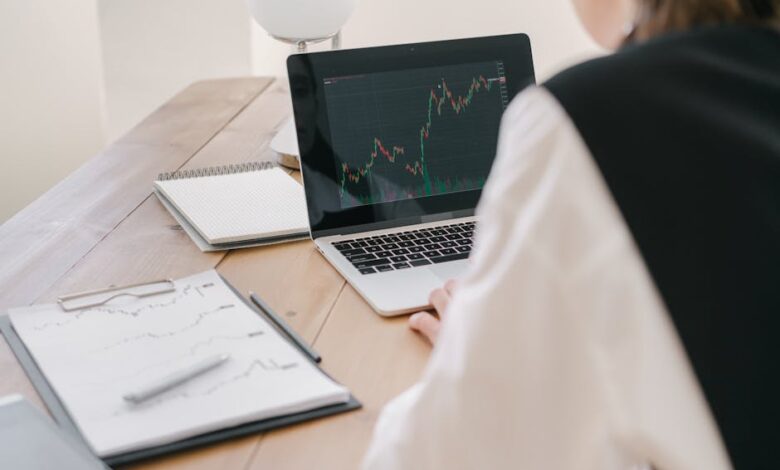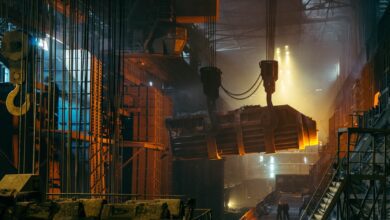Metals in Motion: Analyzing Industrial Demand, Investment Trends, and the Future of Precious Resources

In an ever-evolving global economy, the role of metals extends far beyond traditional uses, intertwining with industrial applications, investment strategies, and environmental sustainability. This article delves into the multifaceted landscape of metal markets, examining key players like silver, copper, and rare earth metals. We start by exploring silver's dual role as both a vital industrial component and an attractive investment asset. Next, we analyze how copper prices serve as a barometer for global economic health, reflecting broader market trends and consumer confidence. As green energy technologies gain momentum, we investigate their impact on the demand for rare earth metals, essential for innovation and sustainability. Additionally, we weigh the merits of platinum versus palladium as investment options, considering their unique properties and market dynamics.
In a world increasingly marked by economic uncertainty, we also discuss how metals can play a crucial role in diversifying investment portfolios, while inflationary pressures influence the prices of both precious and industrial metals. With a spotlight on aluminum's future within a sustainable economy, we conclude by examining how mining regulations shape the pricing and availability of these critical resources. Join us as we navigate these interconnected themes, providing insights into the expanding significance of metals in contemporary markets.
- 1. "Silver's Dual Impact: Navigating Industrial Demand and Investment Opportunities"
- 2. "Copper's Economic Barometer: Understanding Price Fluctuations in a Global Context"
- 3. "Rare Earth Metals: The Green Energy Revolution and Its Demand Dynamics"
1. "Silver's Dual Impact: Navigating Industrial Demand and Investment Opportunities"
Silver's dual role in both industrial applications and as an investment asset creates a unique dynamic that influences its market behavior. On one hand, silver is a critical component in various industries, particularly in electronics, solar energy, and medical applications. The growing demand for photovoltaic cells in solar panels has significantly increased silver's industrial consumption. As countries shift toward renewable energy sources, this trend is expected to strengthen, making silver a vital metal in the transition to a greener economy.
On the investment side, silver is often viewed as a safe haven asset, similar to gold. Investors turn to silver during times of economic uncertainty or inflation, seeking to preserve wealth. This investment appeal is bolstered by silver's relatively lower price compared to gold, making it more accessible for a broader range of investors. Additionally, silver is utilized in various financial instruments, including exchange-traded funds (ETFs), which further facilitate investment exposure.
The interplay between industrial demand and investment interest means that silver prices can be influenced by a range of factors, including technological advancements, market speculation, and macroeconomic trends. For instance, a surge in industrial demand can lead to price increases, which may attract more investors looking to capitalize on potential gains. Conversely, if economic conditions worsen and investors flock to safe-haven assets, the increased investment demand may drive prices higher, even if industrial consumption temporarily slows.
Navigating this dual impact requires an understanding of the broader economic landscape, as shifts in industrial usage and investment sentiment can create volatility in silver prices. Ultimately, silver's unique position at the intersection of industry and investment underscores its importance in both sectors, making it a metal worth watching for those interested in market trends and opportunities.
2. "Copper's Economic Barometer: Understanding Price Fluctuations in a Global Context"
Copper has long been regarded as a reliable indicator of global economic health, often referred to as "Dr. Copper" due to its widespread use across various industries. The metal is integral to construction, electrical wiring, and manufacturing, making its demand closely tied to economic activity. As economies expand, the need for copper increases, driving prices upward. Conversely, during economic downturns, demand typically wanes, leading to price declines.
Fluctuations in copper prices can be attributed to a variety of factors, including supply chain disruptions, geopolitical tensions, and changes in consumer behavior. For instance, a surge in infrastructure projects or housing developments in emerging economies can lead to increased demand, pushing prices higher. On the other hand, global events, such as trade disputes or pandemics, can disrupt supply chains and negatively impact prices.
Additionally, copper prices are influenced by the dynamics of global markets, particularly in major consuming countries like China. As the world's largest importer of copper, China's economic policies and growth projections significantly affect copper demand. For example, if China announces a stimulus package aimed at infrastructure development, copper prices are likely to rise in anticipation of increased consumption.
Investors closely monitor these price movements, as they can signal broader economic trends. Rising copper prices may indicate a robust economic recovery, while falling prices can serve as a warning sign of potential slowdowns. Furthermore, copper's role in green technologies, such as electric vehicles and renewable energy systems, adds another layer of complexity. As the world shifts towards more sustainable energy solutions, copper demand is expected to increase, further intertwining its price fluctuations with global economic developments.
In summary, understanding copper's price movements within a global context offers valuable insights into economic health, making it an essential component for investors and policymakers alike.
3. "Rare Earth Metals: The Green Energy Revolution and Its Demand Dynamics"
Rare earth metals, a group of 17 elements including lanthanum, cerium, and neodymium, play a pivotal role in the transition to green energy technologies. Their unique properties make them essential components in the production of high-performance magnets, batteries, and catalysts used in electric vehicles (EVs), wind turbines, and various electronic devices. As the global economy shifts towards sustainable energy solutions, the demand for these metals is experiencing a significant surge.
The rapid adoption of electric vehicles is one of the primary drivers of rare earth metal demand. EVs rely heavily on neodymium-iron-boron magnets for their motors, which are more efficient than traditional alternatives. Additionally, the push for renewable energy sources, such as wind and solar power, has increased the need for rare earth elements in the manufacturing of turbines and photovoltaic cells. As countries implement stricter emissions regulations and set ambitious climate targets, the race to secure a stable supply of these critical materials intensifies.
However, the supply chain for rare earth metals is fraught with challenges. Most of the world's supply comes from a limited number of countries, primarily China, which controls over 60% of global production. This concentration of supply raises geopolitical concerns and highlights the need for diversification in sourcing. Moreover, the environmental impact of rare earth mining, including land degradation and water pollution, adds another layer of complexity to their extraction and usage.
As the green energy revolution continues to evolve, the dynamics of rare earth metal demand will likely shift. Innovations in recycling technologies and the development of alternative materials may help mitigate some supply issues, but the overall trend points towards increasing consumption. Investors and industries must remain vigilant, adapting to changes in market dynamics and regulatory landscapes to navigate the complexities of this critical sector.
In conclusion, the intricate landscape of metals—ranging from silver and copper to rare earth elements and platinum—illustrates their multifaceted roles in both industrial applications and investment strategies. As we’ve explored, silver serves not only as a valuable asset for investors but also as a crucial component in various industries, highlighting the interplay between market demand and investment potential. Copper's price fluctuations further underscore its significance as a barometer of global economic health, reflecting broader trends that can influence investment decisions.
The rise of green energy technologies has intensified the demand for rare earth metals, positioning them as essential resources in the transition to a sustainable future. Meanwhile, the ongoing debate between platinum and palladium reveals the complexities of investment choices in the precious metals sector, prompting investors to weigh factors such as market trends and industrial applications.
Moreover, the role of metals in diversifying investment portfolios cannot be overstated, especially in an environment characterized by inflationary pressures that impact the prices of both precious and industrial metals. As we look ahead, aluminum's potential in a sustainable economy presents exciting opportunities for growth and innovation, while the influence of mining regulations continues to shape market dynamics and pricing structures.
Overall, understanding the interconnectedness of these metals and their respective markets is crucial for investors and industry stakeholders alike. By staying informed about these trends and developments, one can navigate the complexities of the metal markets effectively, leveraging opportunities for both investment and sustainable growth.





